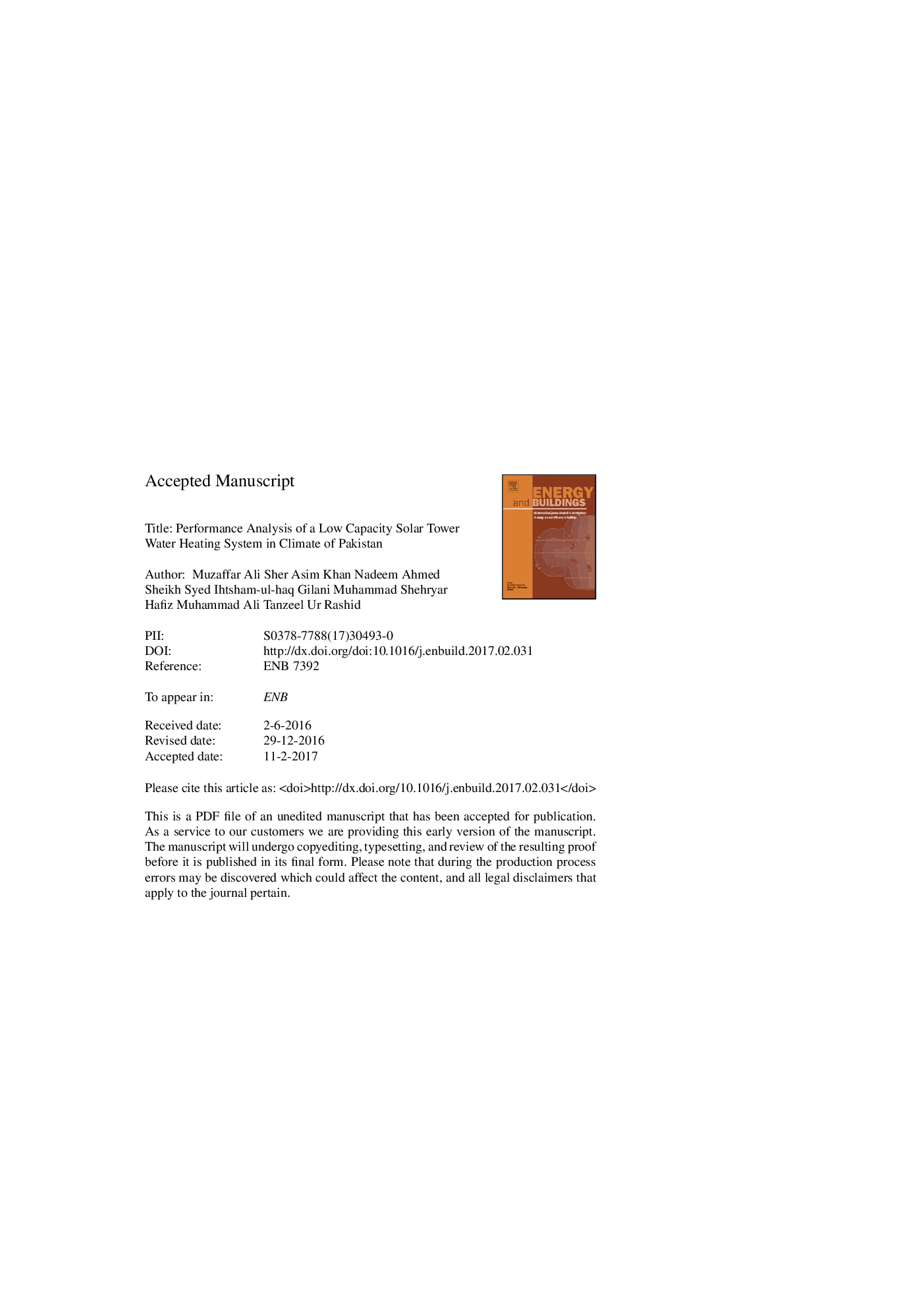| کد مقاله | کد نشریه | سال انتشار | مقاله انگلیسی | نسخه تمام متن |
|---|---|---|---|---|
| 4914192 | 1428947 | 2017 | 37 صفحه PDF | دانلود رایگان |
عنوان انگلیسی مقاله ISI
Performance analysis of a low capacity solar tower water heating system in climate of Pakistan
ترجمه فارسی عنوان
تجزیه و تحلیل عملکرد یک سیستم گرمایش آب خورشیدی با ظرفیت کم در آب و هوای پاکستان
دانلود مقاله + سفارش ترجمه
دانلود مقاله ISI انگلیسی
رایگان برای ایرانیان
کلمات کلیدی
هلیوستات، گیرنده حفره، برج خورشیدی، انرژی خورشیدی،
موضوعات مرتبط
مهندسی و علوم پایه
مهندسی انرژی
انرژی های تجدید پذیر، توسعه پایدار و محیط زیست
چکیده انگلیسی
The heating demands are currently fulfilled through conventional technologies based on fossil fuels. However, due to rapid depletion and environmental hazards of fossil fuels, the focus has shifted to harness the heat energy from renewable energy resources such as solar energy. In general, flat plate and evacuated tubes collectors are used for water heating yet there is another technology known as solar thermal tower (STT) which can be used for heating applications. The current study is focussed on real time performance analysis of solar thermal tower water heating system under climate conditions of Taxila, Pakistan. Initially, a mathematical model is developed to design a small capacity solar thermal tower system. The system is simulated using MATLAB for five different climate conditions of Pakistan i.e. Peshawar, Taxila, Multan, Karachi, and Lahore for potential assessment. Afterwards, an experimental setup is developed at Taxila consisting of a cavity type receiver made of stainless tubes, heliostats made of mirror and complete instrumentation for data measurements. The performance analysis is presented in terms of temperature difference (ÎT), absorbed heat (Qabs), and efficiency (η) with fixed and variable positions of heliostats for 12 selected days between September and February. The results showed that the maximum temperature difference with fixed heliostats position was 3 °C, Qabs was 27 W and the maximum efficiency was 30%. However, with variable heliostats positions, the maximum value of temperature difference achieved was 16 °C that resulted Qabs 170 W and efficiency 34%. Finally, a reasonable agreement between simulated and experimental results was obtained for climate conditions of Taxila.
ناشر
Database: Elsevier - ScienceDirect (ساینس دایرکت)
Journal: Energy and Buildings - Volume 143, 15 May 2017, Pages 84-99
Journal: Energy and Buildings - Volume 143, 15 May 2017, Pages 84-99
نویسندگان
Muzaffar Ali, Sher Asim Khan, Nadeem Ahmed Sheikh, Syed Ihtsham-ul-haq Gilani, Muhammad Shehryar, Hafiz Muhammad Ali, Tanzeel Ur Rashid,
